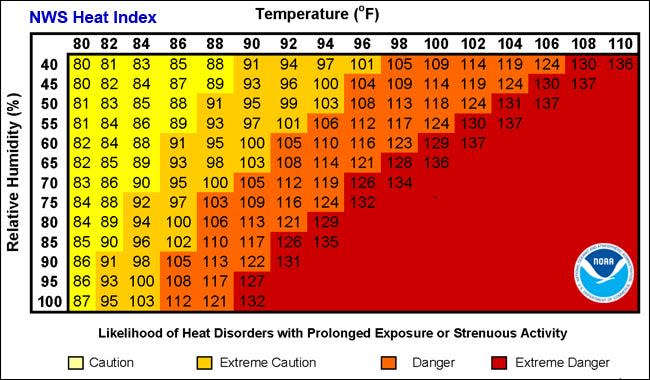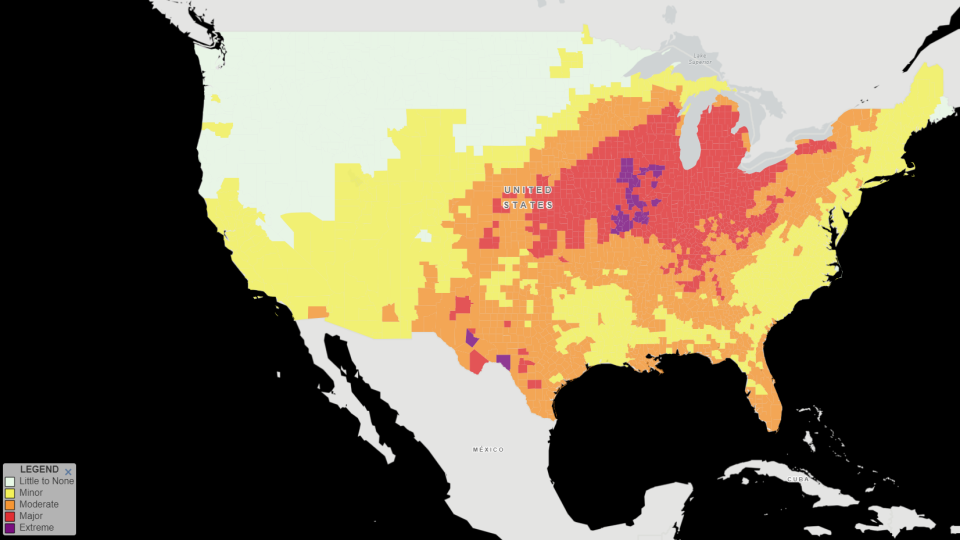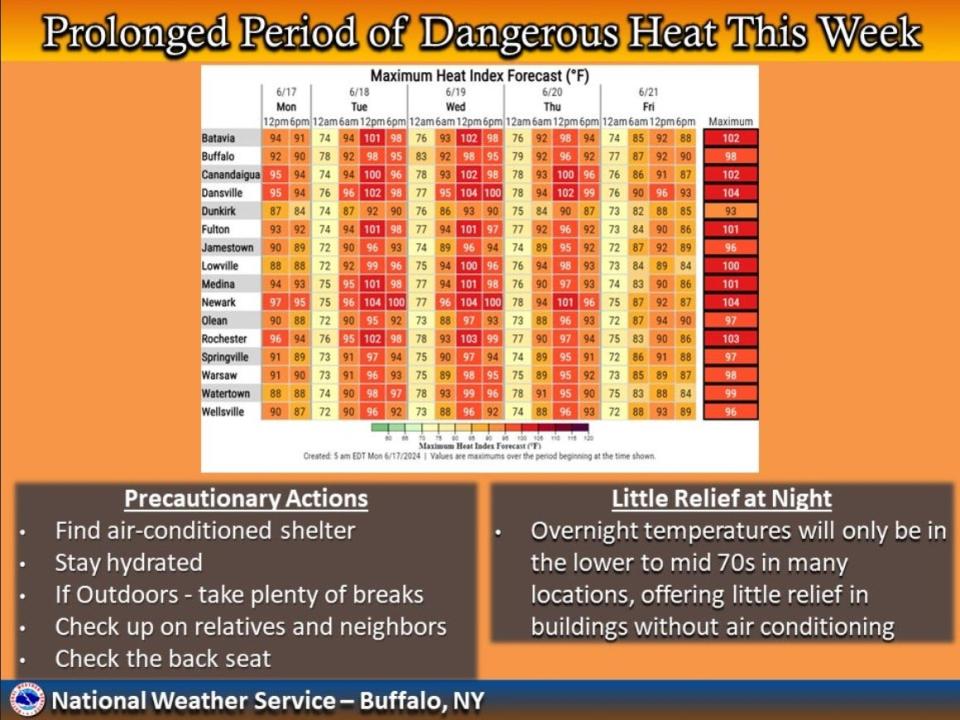What does heat index mean and why is it important in New York? What you should know
Rochester is entering its first heat wave of the summer, with an air temperature above 90 degrees expected for the next four days.
The heat index will be even higher, expected to exceed 95 degrees every day from Monday to Thursday. But what is heat index and how does it affect how stifling this excessive heat feels?
What is heat index?
Heat index factors in the relationship between air temperature and relative humidity to illustrate how the temperature feels to the human body. A heat index of 95 degrees, for instance, can be reached in different combinations such as 86 degrees with 70% humidity or 90 degrees at 50% humidity.

As a two-part measurement, heat index can be measured using charts or online calculators to explore the difference between the two figures and the amount of danger that heat index represents. A heat index of 103 or greater is considered dangerous, based on the National Weather Service heat index chart. The peak heat index forecast for the Rochester area will be 103 degrees on Wednesday.
What is a heat wave?
A heat wave for Western New York is defined as three or more consecutive days with a heat index greater than 95 degrees. This week, the stretch from Monday through Thursday is expected to fit that definition, though Friday will still have a heat index greater than 90 degrees.
What is HeatRisk?

A new tool for measuring the health implications of heat from the Centers for Disease Control and Weather Service was released earlier this year, called HeatRisk. The tool brings together a few different measurements to illustrate the overall health risk from heat on any given day, including temperature and air quality.
HeatRisk factors in how above normal a temperature is at your location, the time of year, the duration of the abnormal heat and if those temperatures are high enough to create an elevated risk for heat complications.
It does not factor in humidity due to a lack of weather stations nationwide that track humidity values, but uses the relationship between temperature and dew point temperature to approximate the role of humid air.
HeatRisk does this by considering how unusually high overnight temperatures are and how large the difference is between overnight lows and daytime high temperatures, as more humid air leads to warmer overnight low temperatures with a smaller difference between daytime highs and overnight lows.
More: National Weather Service and CDC introduce new tool to gauge heat-related risks
What is the HeatRisk in Monroe County this week?
The HeatRisk for Monroe County on June 17 and 18 is considered major, but expected to reach extreme for Wednesday and Thursday. Major on the HeatRisk scale indicates the heat can impact everyone and to spend at least a few hours in a cool place to lower your risk for health impacts from heat.
Extreme on the same scale indicates very intense heat that everyone should take steps to protect themselves from.
What types of heat warnings does NWS issue?
The National Weather Service issues four types of heat-related advisories:
Excessive heat warning: An excessive heat warning is issued within 12 hours of the onset of extremely dangerous heat conditions. The general rule of thumb for this warning is when the maximum heat index temperature is expected to be 105 degrees or higher for at least two days and nighttime air temperatures will not drop below 75 degrees. These criteria vary across the country, especially for areas not used to extreme heat conditions.
What you should do: If you don't take precautions immediately when conditions are extreme, you may become seriously ill or even die.
Excessive heat watch: Heat watches are issued when conditions are favorable for an excessive heat event in the next 24 to 72 hours. A watch is used when the risk of a heat wave has increased but its occurrence and timing is still uncertain.
Heat advisory: A heat advisory is issued within 12 hours of the onset of extremely dangerous heat conditions. The general rule of thumb for this advisory is when the maximum heat index temperature is expected to be 100 degrees or higher for at least two days, and nighttime air temperatures will not drop below 75 degrees. These criteria vary across the country, especially for areas that are not used to dangerous heat conditions.
What you should do: Take precautions to avoid heat illness. If you don't take precautions, you may become seriously ill or even die.
Excessive heat outlooks: The outlooks are issued when the potential exists for an excessive heat event in the next three to seven days. An outlook provides information to those who need considerable time to prepare for the event.
Monroe County is under a heat advisory through Thursday, June 20. The advisory conditions include temperatures and high humidity that may cause heat-related illnesses.

What are symptoms of heat-related illnesses?
The most common health impacts of heat include heat exhaustion and heat stroke. Heat exhaustion can lead to heat stroke, according to the CDC.
Heat exhaustion symptoms include dizziness, thirst, heavy sweating, nausea and weakness. If you experience these symptoms, move to a cooler area, loosen clothing and drink cool water; if symptoms do not improve, seek medical help.
Heat stroke symptoms including confusion, dizziness and loss of consciousness. If this happens to someone nearby, call 911. Move the person experiencing symptoms to a cool place, cool them with water and ice, and loosen or remove excess layers of clothing. Heat stroke can be fatal or cause permanent disability without emergency treatment.
This story includes reporting by Cheryl McCloud from Florida Today.
This article originally appeared on Rochester Democrat and Chronicle: Heat index calculator: How to calculate heat index during NY heat wave

